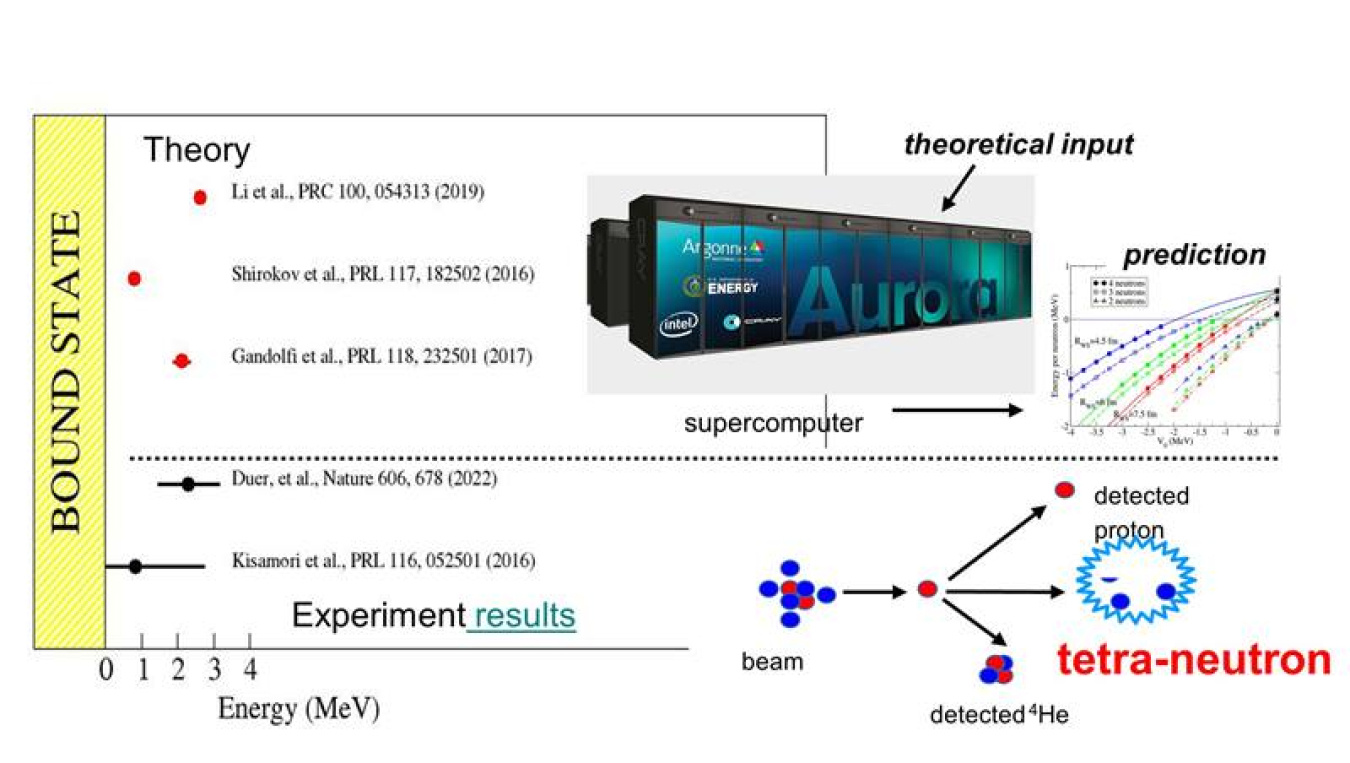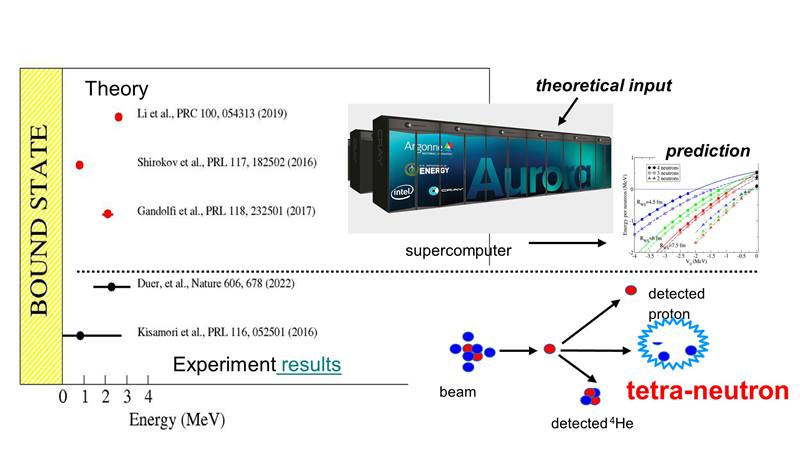
The Science
The possible existence of the tetraneutron has puzzled both nuclear theorists and experimentalists for decades. Except in the extreme conditions of neutron stars, atomic nuclei contain one or more protons in addition to neutrons. Scientists thus have a limited understanding of systems that consist only of neutrons. The tetraneutron is a meta-stable nuclear system that can decay into four free neutrons. The prediction and measurements of tetraneutron properties are very important for understanding the properties of nuclei. Several works by the NUCLEI collaboration have predicted the existence of the tetraneutron system since 2016. Now scientists have observed tetraneutrons in experimental conditions. Experimental measurements of the tetraneutron system can be deduced by measuring the missing energy in nuclear reactions. These experimental results agree with simulations made using parallel supercomputers.
The Impact
The new results will advance new theoretical calculations and help confirm theoretical predictions. This is particularly true of the latest experimental results. Nuclear physicists have a good understanding of proton-proton and proton-neutron interactions. They also understand how scattering data from particle collision constrain these interactions. However, nuclear physicists still need direct validation of the forces between pure neutron systems. The knowledge of nuclear interactions between neutrons is critically important in several fields, including the study of neutron-rich nuclei and neutron stars.
Summary
The discovery of a tetraneutron resonance will open new challenges in nuclear physics. In particular, new experiments and calculations will be very important to test researchers’ knowledge of nuclear interactions. The NUCLEI collaborations as part of the Department of Energy (DOE) Scientific Discovery Through Advanced Computing (SciDAC) program have played a critical role in theoretical work in this area.
Contact
Stefano Gandolfi
Los Alamos National Laboratory
[email protected]
Funding
This work was supported by DOE and by the NUCLEI SciDAC project, jointly funded by DOE Office of Science’s Office of Nuclear Physics and Office of Advanced Scientific Computing Research.
Publications
Gandolfi, S., et al., Is a Trineutron Resonance Lower in Energy than a Tetraneutron Resonance? Physical Review Letters 118, 232501 (2017). [DOI: 10.1103/PhysRevLett.118.232501]
Shirokov, A. M., et al., Prediction for a four-neutron resonance. Physical Review Letters 117, 182502 (2016). [DOI: 10.1103/PhysRevLett.117.182502]
Kisamori, K., et al., Candidate resonant tetraneutron state populated by the 4He(8He,8Be) reaction. Physical Review Letters 116, 052501 (2016). [DOI: 10.1103/PhysRevLett.116.052501]
Duer, M., et al., Observation of a correlated free four-neutron system. Nature 606, 678–682 (2022) [DOI: 10.1038/s41586-022-04827-6]
Related Links
Science News: Physicists may have finally spotted elusive clusters of four neutrons
Darmstadt Technical University news: Long sought-after particle consisting of four neutrons discovered
SciTechDaily: Experimental Discovery of a Tetraneutron – An Exotic State of Matter
Scraped from https://www.sourcearu.com




